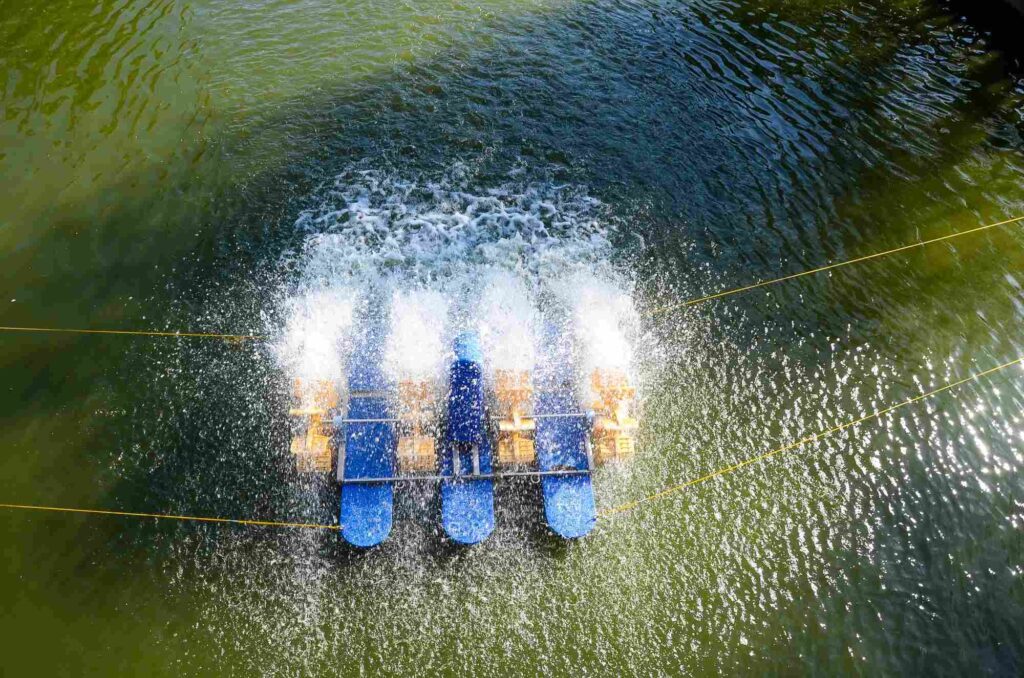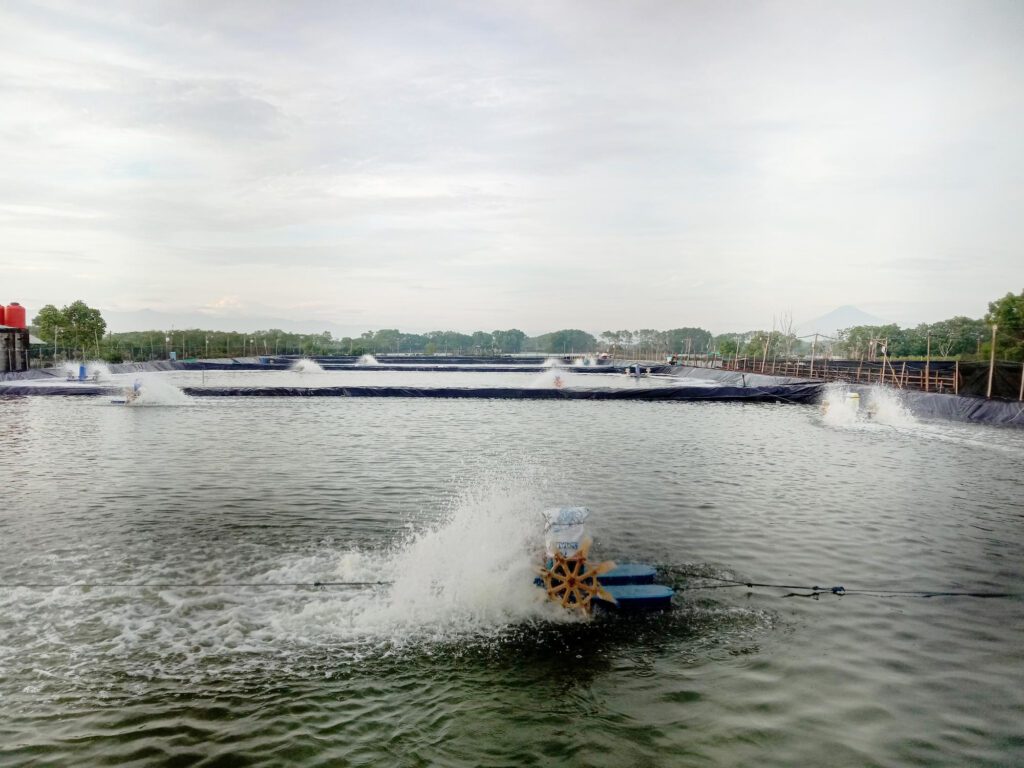

Why is the shrimp pond a unique ecosystem and what are its needs of Dissolved oxygen and how does it change?
Oxygen is a critical factor in the health and productivity of shrimp ponds. Proper oxygen management ensures the well-being of shrimp, enhances growth rates, and reduces the risk of disease. Shrimps are mostly inhabiting the bottom of the ponds or any culture system.
· Sinking pellets are used for feeding the shrimps. Hence the pond bottom is the place where the shrimps tend to spend maximum time.
· Light penetration to the bottom is less compared to surface hence oxygen generation through photosynthesis is less.
· All the waste generated in the pond, dead plankton, everything settles at the bottom of the pond.
· Chemical reactions taking place at the pond bottom and other organisms also consume oxygen.
The optimal DO levels for shrimp are typically between 5 and 8 mg/L. Levels below 3 mg/L can stress shrimp, making them more susceptible to disease and stunting their growth. Extended periods of low DO can lead to high mortality rates, increase susceptibility for disease. Although super saturation of water with Dissolved oxygen can result in gas bubble disease, it is a very rare occurrence.
Oxygen Management Strategies
- Monitoring DO Levels: Regular monitoring of DO levels is crucial.
2. Aeration Techniques: There is no aeration required at low stocking densities may be up to about 1.5 -2.0 tons of total biomass in well managed ponds. As the stocking density increases aeration requirement increase to maintain the same Do level in the pond.
–Paddlewheel Aerators: These are commonly used in shrimp ponds to increase surface area and enhance oxygen transfer.
-Diffused Air Systems: These systems use air compressors to pump air through diffusers placed at the bottom of the pond, creating bubbles that rise and increase oxygen levels.
– Venturi Aerators: These devices inject air into the water column, enhancing oxygenation and circulation.
Above article are excerpt from: Dissolved Oxygen and its Management in Shrimp Ponds, posted by Mr. Chandra Bhat, Seafood Processing Specialist & Expert | Shrimp Farming Expert


